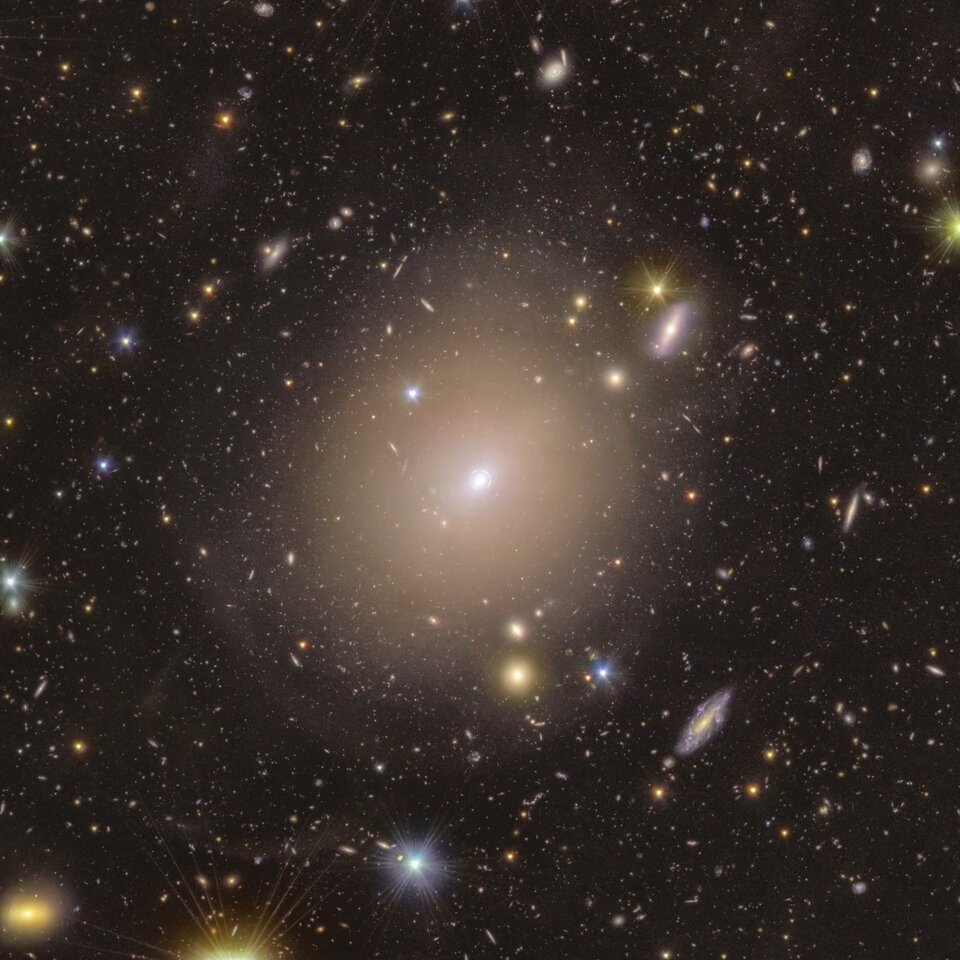European Space Agency Euclid researchers investigated an incredible discovery after spotting a very unusual phenomenon in our cosmic neighborhood.

Euclid image of a bright Einstein ring around galaxy NGC 6505. Image Credit: European Space Agency
Euclid embarked on a six-year mission to explore the dark Universe. The team of engineers and scientists spearheading the project had to ensure everything was in working order before the spacecraft could start its survey. Euclid transmitted a few pictures back to Earth during this initial testing stage. They were purposefully blurry, but Euclid Archive Scientist Bruno Altieri decided to investigate after spotting a faint indication of a very unusual phenomenon in one blurry image.
I look at the data from Euclid as it comes in. Even from that first observation, I could see it, but after Euclid made more observations of the area, we could see a perfect Einstein ring. For me, with a lifelong interest in gravitational lensing, that was amazing.
Bruno Altieri, Archive Scientist, European Space Agency Euclid
It turned out that the Einstein Ring, a very uncommon phenomenon, was concealed in plain sight in a nearby galaxy. The galaxy, known as NGC 6505, is only a stone's throw away from Earth, at about 590 million light-years. Euclid's high-resolution instruments, however, are the first to detect the ring of light surrounding its center.
The foreground galaxy's ring is made up of light from a brighter galaxy farther away. This background galaxy is 4.42 billion light-years away, and its light has been bent by gravity as it travels to Earth. The distant galaxy has never been sighted before and does not yet have a name.
An Einstein ring is an example of strong gravitational lensing. All strong lenses are special, because they're so rare, and they're incredibly useful scientifically. This one is particularly special, because it’s so close to Earth and the alignment makes it very beautiful.
Conor O’Riordan, Study Lead Author, Max Planck Institute for Astrophysics
According to the general theory of relativity developed by Albert Einstein, light will bend around objects in space and focus like a giant lens. More massive objects, such as galaxies and clusters of galaxies, are more affected by this gravitational lensing effect. It implies that occasionally we can see the light from far-off galaxies that would otherwise be obscured.
The light from the far-off source galaxy bends to create a stunning ring around the foreground object if the alignment is perfect. For scientists, these Einstein rings are a wealth of resources. By studying their gravitational effects, we can uncover the influence of invisible dark matter and dark energy, gain insights into the Universe’s expansion, and investigate background sources whose light is bent by dark matter between Earth and those distant objects.
I find it very intriguing that this ring was observed within a well-known galaxy, which was first discovered in 1884. The galaxy has been known to astronomers for a very long time. And yet this ring was never observed before. This demonstrates how powerful Euclid is, finding new things even in places we thought we knew well. This discovery is very encouraging for the future of the Euclid mission and demonstrates its fantastic capabilities.
Valeria Pettorino, Project Scientist, European Space Agency Euclid
Euclid will provide additional insight into the nature of dark energy and dark matter, as well as the role of gravity, by examining the expansion and formation of the Universe throughout its cosmic history. The space telescope will observe billions of galaxies spanning 10 billion light-years, mapping over one-third of the sky. About 100,000 strong lenses should be found, but it's incredible to find one so near to home. Less than 1000 strong lenses were known up until this point, and even fewer had high-resolution images.
“Euclid is going to revolutionize the field, with all this data we've never had before,” added Conor.
Even though the Einstein ring is stunning, Euclid's main task is to look for the more subtle effects of weak gravitational lensing, in which background galaxies appear just slightly stretched or displaced. To discover this effect, researchers will need to examine billions of galaxies. Euclid began its precise survey of the sky on February 14th, 2024, and is gradually building the most comprehensive 3D representation of the Universe yet. Such an astonishing discovery so early in its mission indicates that Euclid is on track to reveal many more hidden mysteries.
Journal Reference:
O’Riordan, C. M., et al. (2025) Euclid: A complete Einstein ring in NGC 6505. Astronomy & Astrophysics. doi.org/10.1051/0004-6361/202453014